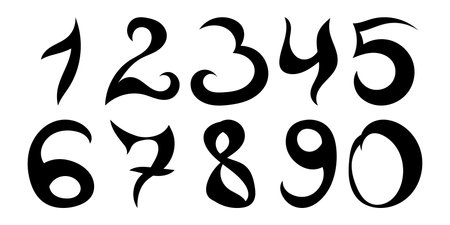1. Understanding Oracle Cards in Modern America
What Are Oracle Cards?
Oracle cards are a popular tool for self-reflection, guidance, and intuitive exploration. Unlike tarot cards, which follow a specific structure with 78 cards and well-defined suits, oracle decks are more flexible. Each deck is unique and often created around a central theme chosen by the artist or author. This makes them accessible for beginners and appealing to those looking for personal or spiritual insights.
The Growing Popularity of Oracle Cards in the United States
In recent years, oracle cards have become increasingly mainstream across America. People from all walks of life use them for daily inspiration, mindfulness practices, and even group gatherings. The rise in popularity is fueled by social media, where influencers share card pulls and deck reviews, making it easy for newcomers to learn how to use these tools. Bookstores, metaphysical shops, and online retailers now offer a wide variety of decks tailored to American tastes.
How Oracle Cards Differ from Tarot Cards
| Aspect | Oracle Cards | Tarot Cards |
|---|---|---|
| Number of Cards | Varies (usually 30-60) | Always 78 |
| Structure | No set structure; theme-based | Major & Minor Arcana with suits |
| Themes | Wide range (angels, animals, affirmations) | Traditional archetypes and symbolism |
| Reading Style | Intuitive, flexible interpretations | Structured meanings and spreads |
| Cultural Influence | Modern American themes & diverse art styles | Renaissance/medieval European roots |
Common Themes and Deck Styles in American Culture
American-made oracle decks often reflect local values and interests. Some common themes include:
- Self-care & Wellness: Decks focused on mindfulness, mental health, or daily affirmations.
- Nature & Animals: Wildlife or botanical imagery connecting users with the natural world.
- Cultural Diversity: Inclusive artwork representing various ethnic backgrounds and beliefs.
- Mysticism & Spirituality: Decks inspired by astrology, crystals, or ancestral wisdom.
This variety allows individuals to find a deck that resonates with their personal journey while reflecting contemporary American culture.
2. Popular Oracle Card Spreads and Their Meanings
Oracle cards are a popular tool for intuitive guidance in the United States, used by people from all walks of life seeking clarity and inspiration. There are several common card spreads that can help you tap into your intuition and gain fresh insights. Here’s a look at some of the most widely used oracle card spreads, what they mean, and when to use each one.
Three-Card Draw
The three-card draw is probably the most accessible and versatile spread in the U.S. It’s perfect for beginners or anyone looking for quick insight into a situation.
| Position | Meaning |
|---|---|
| 1. Past | What has already happened or led to your current situation |
| 2. Present | Your current circumstances or mindset |
| 3. Future | The likely outcome or what to expect next |
When to Use: The three-card draw is great for daily check-ins, quick answers, or when you want a snapshot overview of any question or challenge.
Relationship Spreads
Relationships are a key focus for many Americans using oracle cards. These spreads can provide clarity about romantic connections, friendships, or family dynamics.
| Position | Meaning |
|---|---|
| 1. You | Your feelings, role, or perspective in the relationship |
| 2. The Other Person | Their feelings, role, or perspective |
| 3. The Relationship Dynamic | The energy between you both or the overall connection |
| 4. Guidance/Advice (optional) | An action step or advice for moving forward together or apart |
When to Use: Choose a relationship spread when you need insight into how someone else is feeling, understanding conflict, or guidance on improving a connection.
Goal-Setting Layouts
A growing trend among Americans is using oracle cards as a tool for personal growth and goal-setting. These spreads help clarify your intentions and identify steps toward achieving your goals.
| Position | Meaning |
|---|---|
| 1. Your Goal/Intention | The focus of what you want to achieve or manifest |
| 2. What Helps You | Your strengths or resources supporting your goal |
| 3. What Challenges You | Pitfalls or obstacles to be aware of on your path |
| 4. Next Step/Advice (optional) | A practical action to move forward with purpose |
When to Use: Try this layout at the start of a new project, during New Year resolutions, or anytime you’re setting intentions and want extra clarity on how to reach them.
Tuning Into Your Intuition With Spreads
No matter which spread you choose, remember that oracle cards work best when you trust your instincts. There’s no right or wrong way—let your intuition guide how you interpret each position and message. Feel free to adapt these spreads based on your needs and questions as they arise.

3. Building Intuitive Reading Practices
Developing your intuition is at the heart of effective oracle card readings. In American spiritual and self-help circles, intuition is often described as an inner voice or gut feeling—something everyone has but can strengthen with practice. Here’s how you can build intuitive reading practices and make the most out of your oracle card spreads.
Trusting Your Inner Guidance
When working with oracle cards, it’s important to approach each reading with an open mind. Set aside any expectations and allow yourself to receive insights without judgment. Many American readers start by taking a few deep breaths, setting an intention, or saying a short affirmation like “I am open to guidance.” This simple step helps clear your mind and prepares you to listen to your intuition.
Methods for Developing Intuition
| Method | Description | American Practice Example |
|---|---|---|
| Journaling | Write down impressions, feelings, and images that come up during readings. | Keep a “card journal” to track patterns and personal symbols over time. |
| Meditation | Use quiet time before or after readings to connect with your inner self. | Try guided meditations focused on intuition, common in many wellness apps. |
| Free Association | Allow your mind to wander and make connections between cards and your life. | Think about what each image reminds you of from everyday experiences. |
| Affirmations | Repeat positive statements that reinforce trust in your intuition. | Phrases like “I trust my inner wisdom” are popular in American self-help books. |
Approaching Readings with an Open Mind
Oracle cards work best when you’re willing to let go of rigid interpretations. While guidebooks can offer helpful meanings, try using them as starting points rather than strict rules. Many American practitioners encourage readers to notice their first reaction to a card—the colors, shapes, and feelings it brings up. These immediate responses often carry the most authentic guidance for your situation.
Recognizing Personal Symbolism
The symbols on oracle cards might mean something different to you than they do to someone else. For example, a mountain could represent a challenge for one person but adventure for another. Keeping track of these personal meanings is a common practice in American spiritual communities. Over time, you’ll develop your own symbolic language that makes readings more meaningful and unique to you.
Simple Ways to Tune In:
- Notice emotional reactions: Pay attention to any strong feelings a card triggers—these are clues from your intuition.
- Create your own symbol list: Write down what certain images mean to you personally and refer back as needed.
- Share insights with others: Many Americans enjoy discussing card readings with friends or online groups, gaining new perspectives through community support.
By trusting yourself and using practices rooted in American spiritual traditions, you’ll find that your connection to oracle cards grows stronger with every reading.
4. Ethical and Effective Reading Techniques
Understanding Responsible Oracle Card Interpretations
When using oracle card spreads, it’s important to approach each reading with integrity and care. In the United States, ethical standards for spiritual services emphasize clear communication, honesty, and respect for personal boundaries. Readers should focus on interpreting cards in a way that honors the client’s unique experience without making absolute predictions or overstepping their role.
Best Practices for Ethical Oracle Card Readings
| Practice | Description | Why It Matters |
|---|---|---|
| Confidentiality | Keep all client information private and secure. | Builds trust and respects personal privacy. |
| Avoid Diagnosing or Predicting Medical/Legal Issues | Never offer medical, legal, or financial advice unless professionally qualified. | Keeps readings within ethical and legal limits. |
| Empowering Guidance | Encourage clients to make their own informed choices. | Supports personal growth and self-agency. |
| Respect Boundaries | Do not pressure clients to share more than they wish. | Maintains a safe and comfortable environment. |
| Cultural Sensitivity | Acknowledge and respect diverse backgrounds and beliefs. | Makes readings inclusive for everyone. |
| Honest Communication | If something is unclear, say so. Don’t fabricate answers. | Promotes transparency and authenticity. |
Respecting Client Boundaries in Practice
During oracle card sessions, always ask for consent before starting the reading or discussing sensitive topics. If a question feels too personal or outside your expertise, gently redirect or suggest alternative approaches. It’s also helpful to clarify what a reading can and cannot do—oracle cards are tools for reflection, not fortune-telling machines. This sets realistic expectations and ensures both you and your client feel respected throughout the process.
Offering Empowering Guidance, Not Directives
The goal of an intuitive oracle card reading is to provide insight, inspiration, and support—not to control someone’s decisions. Focus on highlighting possibilities, strengths, and resources rather than dictating actions. Use empowering language such as “You might consider…” or “One interpretation could be…” instead of commanding phrases like “You must…” This encourages clients to trust their intuition and take ownership of their paths while feeling supported by your guidance.
5. Integrating Oracle Cards Into Everyday Life
Making Oracle Cards Part of Your Daily Routine
Oracle cards aren’t just for special occasions—they can easily fit into a typical American lifestyle. Here are some practical ways to make oracle cards part of your everyday life:
| Situation | How to Use Oracle Cards |
|---|---|
| Morning Routine | Pull a single card to set your intention or mood for the day. |
| Work Breaks | Draw a card during lunch or coffee breaks for a quick mindset reset. |
| Evening Reflection | Use a card to reflect on what you learned or accomplished that day. |
| Family Time | Create a fun ritual by letting each family member draw a card and share their thoughts. |
Using Oracle Cards for Goal Setting and Planning
If you’re setting goals or planning out projects, oracle cards can offer fresh perspectives or encouragement. Try these ideas:
- Weekly Planning: Pull three cards—one for focus, one for potential challenges, and one for support. Let these guide your priorities and self-care plans.
- Decision Making: When facing a tough choice, draw a card to highlight aspects you might not have considered.
- Vision Boards: Add favorite oracle cards to your vision board as motivational images or reminders.
Encouraging Mindfulness and Self-Care with Oracle Cards
Oracle cards are great mindfulness tools because they help you pause, check in with yourself, and gain new insight. Here’s how Americans can use them for self-care:
- Meditation Prompt: Choose a card before meditating to set an intention or focus point.
- Journaling Inspiration: Use the message from your daily card as a journaling prompt.
- Anxiety Relief: During stressful moments, shuffle your deck and pull a calming card to ground yourself.
Building Community Through Oracle Card Circles
Sharing oracle cards in group settings can build connections and foster inclusivity. Whether it’s in person or online, try these American-friendly approaches:
- Coffee Meet-Ups: Host casual gatherings at home or local cafes where friends each draw a card and discuss its meaning together.
- Diverse Group Readings: Encourage everyone, regardless of background, to share their own interpretations. This celebrates different viewpoints and makes everyone feel welcome.
- Accessible Events: Offer virtual oracle circles via video calls so people who can’t attend in person still feel included.
Tips for Keeping Oracle Card Practice Inclusive & Accessible
- No Experience Needed: Make it clear that there are no “right” answers—everyone’s intuition is valid!
- Diverse Decks: Use decks that feature different cultures, backgrounds, and identities to reflect America’s diversity.
- No Cost Options: Share printable cards online or rotate decks so everyone gets a chance to participate without financial barriers.
The beauty of oracle cards is how adaptable they are—anyone can use them, anytime. From personal growth to community connection, these simple tools fit right into everyday American life while encouraging mindfulness, self-discovery, and inclusivity.


